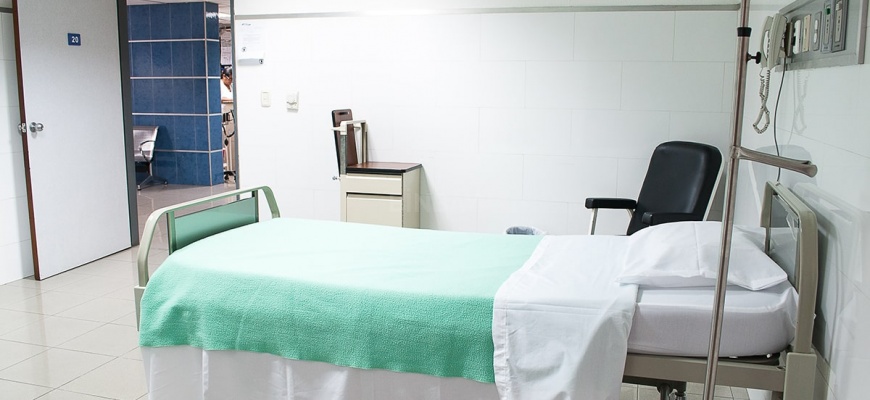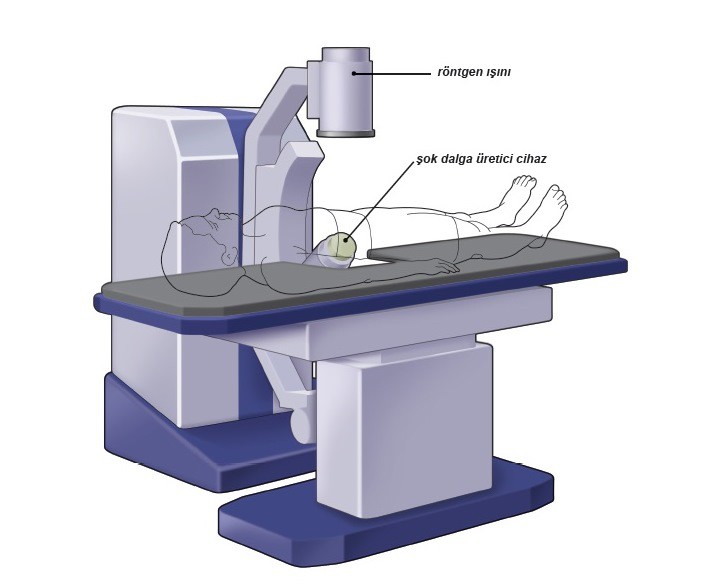
The procedure in which sound waves are used to break kidney stones is colloquially known as painless (non-surgical) kidney stone breaking. The procedure intended to crush kidney stones by using sound waves is performed with a device that emits sound waves focused on the target. These sound waves crush the stone into pieces. Small pieces remaining in the kidney are expected to be excreted from the patient's urinary tract in normal ways.
ESWL, the abbreviated form of Extracorporeal Shock Wave Lithotripsy, is a non-surgical procedure invented in the 1980s.
More than 90% of kidney stone patients can be treated with ESWL. ESWL is not a completely harmless procedure. Therefore, it is important to choose the right patients when recommending ESWL.
How does Breaking up Kidney Stones with Extracorporeal Shock Wave Lithotripsy (ESWL)?
The patient lies on the back of the ESWL device. An X-ray generation device is used to locate the place of the stone in the kidney. The stone whose location has been precisely determined is broken up by the shock wave generating device standing on the side of the patient just at waist level.
During the procedure, the machine produces sounds that resemble small explosions. The volume of the sounds may increase as the doctor increases the intensity of the shock waves.
The stone crushing process can take about 30-40 minutes.
There is no need to anesthetize the patient. The procedure is not performed under anesthesia.
If there is more than one kidney stone or the stone is large, the procedure is performed in several sessions.
It is recommended not to exceed 3 sessions in treatments with an ESWL device.

Advantages of ESWL
In the kidney stone crushing process involving the use of sound waves, the risk of complications is very low.
Since ESWL is not a surgical procedure, and no incision is made in the body, the patient can be discharged the same day.
There is no need to anesthetize the patient during the procedure.
Get information about kidney stone surgery.
Disadvantages of ESWL
In the ESWL procedure, which provides a high success rate, broken stones cannot sometimes pass through the urinary tract. Even if the stone is broken in the kidney, there is a risk that the pieces of stone cannot be discharged in natural ways. Therefore, the patient may experience severe pain.
More than one ESWL session is needed for the elimination of large stones.
In Which Conditions Is ESWL Absolutely Not Performed?
ESWL cannot be performed in some cases, depending on the patient’s medical condition. Therefore, if you have any of the following conditions, you should definitely share them with your physician.
- Pregnancy
- A wound carrying the risk of bleeding
- An untreated urinary tract infection
- Hypertension
- Ballooning (aneurysm) in intra-abdominal vessels
- A blockage in the urinary tract
- A stone too hard to crush
Stone crushing with ESWL is not recommended in the following conditions due to a low chance of success:
- Overweight patients (the success rate of the stone crushing procedure decreases when the skin-to-stone distance is greater than 10 cm)
- Stones larger than 2 cm in size (Large stones are more difficult to crush, and if they are crushed, many particles will be formed, which will block the urinary channels, and consequently, the patient will need to be operated on urgently)
- Stones located in the lower part of the kidney
Frequently Asked Questions about ESWL
Are kidney stones eliminated completely after stone crushing?
No! In the ESWL (crushing kidney stones with sound waves) procedure, the stones in the kidney are crumbled. The patient is expected to discharge these small pieces from the body in natural ways. It is important to take the required drugs to reduce pain and prepare the urinary tract for the discharge of kidney stones from the body.
What should be done for the preparation before ESWL?
ESWL is not recommended when the patient is on certain medications. In this respect, it is important for the patient to inform the physician of the drugs he/she currently uses.
Eating and drinking should be stopped 3-4 hours before the ESWL procedure.
Will I face any problems with returning to daily activities?
Since the ESWL procedure involves no incision or anesthesia, the patient is discharged the same day. The person can immediately return back to his/her daily activities. However, physicians recommend patients rest at home for a while after the session.
Fluid consumption should be increased to ensure easy and rapid discharge of the broken stones.
It is recommended not to consume alcoholic beverages within the first 24 hours after the session.







